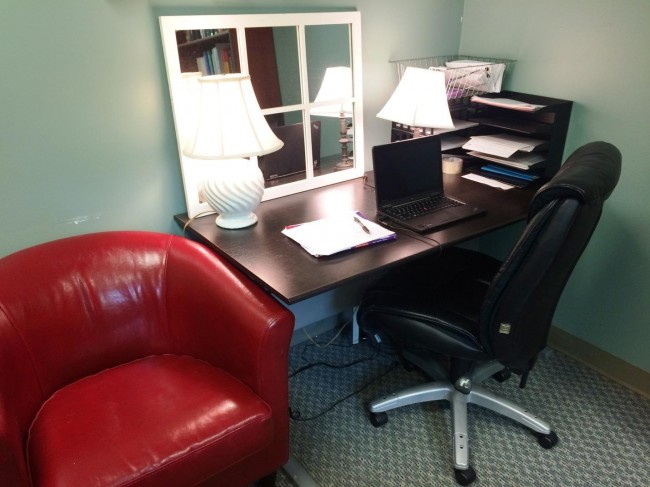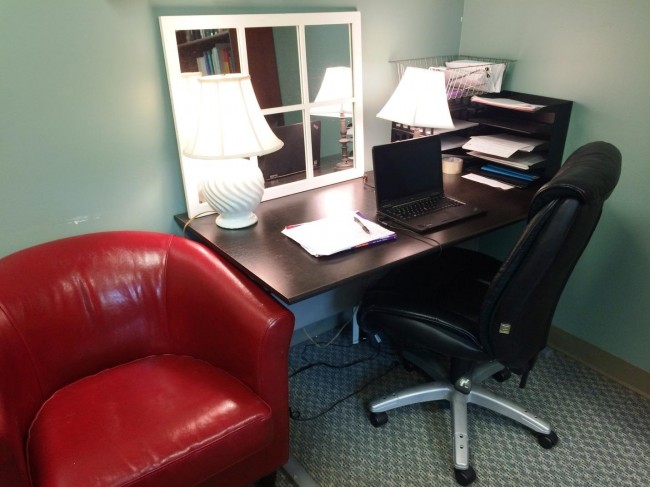
Are you having problems sleeping at night, controlling your weight, or managing your blood sugar, pressure, or cholesterol? Do you feel tired and listless at work? If you are a white collar worker, you are probably sitting too much and for too long. And this may be the greatest health hazard we all face. We have subdued our natural surroundings, controlled infectious diseases, and reduced warfare. The human lifespan is at an all-time record high, but the civilized lifestyle may be a mixed blessing. Indians living in the US are succumbing to the so called western diseases or life style diseases like asthma, cancer, chronic liver disease or cirrhosis, chronic obstructive pulmonary disease, type 2 diabetes, heart disease, stroke, depression, sleep disorders, and obesity. Our sedentary lifestyle, along with easy access to processed food, poses grave dangers to our health and well-being.
The human body is a product of millions of years of evolution. It was never meant to be sedentary. New science is revealing that being immobile and sitting at the same place for hours has dire consequences. With time, we have relegated more and more of our physical work to machines. We have harnessed the energy of fossil fuels and electricity to replace physical labor. A person can get all his work done and buy all things necessary for survival with just a click of the mouse. If you are an average Indian American, your usual day begins with sitting at the table eating your breakfast, then sitting in your car or a bus or train going to work. At work, you will sit at your desk for eight hours and then return home while sitting in a motorized vehicle. You will have dinner while sitting, and then watch TV while relaxing on a couch. Some of you may go for a run or lift weights for an hour in the gym. In total, the average Indian American is sitting more than 9 hours in a day. This is an all-time high in recorded history.
There is a vast amount of data linking a physically active lifestyle to lower rates of morbidity and mortality. Health organizations recommend that everyone needs around 1 hour of exercise a day. The American Heart Association and American College of Sports Medicine call for a minimum of 30 minute of moderate-intense physical activity 5 days a week or 20 minute of vigorous intense physical activity 3 days a week. But new research reveals that one hour of activity is not enough to mitigate the harms of 23 hours of inactivity. This new finding is revolutionizing how we think about exercise.
The association between sitting and mortality is dose dependent; the more you sit, the less you live. This is independent of leisure activity or baseline BMI. It means that no matter how much exercise we get, how healthy we eat, how slim we remain, the dangers of prolonged sitting will still cause harm. Nothing can counteract the detrimental effects of prolonged inactivity. Sitting shortens lifespan. Sitting is as harmful as smoking cigarettes and can be considered a disease like smoking. Studies have shown that even four hours of sitting will change your body’s metabolism. Sitting is especially harmful for women. Women who sit for more than 6 hours per day have a 40 percent increased all cause death rate compared to those sitting less than 3 hours per day! This association is not affected by the amount of physical activity women receive.
If we look back in history, until very recent times human have always been moving. In the beginning we were all hunter and gatherers. We used to forage for food. Then the economy switched to pastoral and later full time agricultural. At that time most people worked on farms with limited machinery and no electricity. All work at home and outside was accomplished by human and animal labor. After the industrial revolution, things began to change as fossil fuels and electricity replaced physical labor. Now we are at the extreme end. In this digital age, almost everything can be done seated. Although tools and technology changed our environment, our body has not had time to evolve. Scientists and anthropologists conclude that the human body has not changed much over the last 40,000 years.
Most Indians living in the US are white collar workers. They are engaged in the Engineering, Research, Information technology, and health care sector. Most do their work either at an office or from their home sitting in front of a computer. They may argue that since they work with their brains, they need to sit in order to focus and concentration. They may say, “We are technocrats, we have degrees, and our job demands us to make smart decisions. We cannot stand and move around. Deep thinking and contemplation requires the meditative stillness of sitting.” This may seem like a valid argument, but it may not actually be. The brain has enormous plasticity. It can produce new neurons and make new synaptic connections throughout life. Scientists have found that a protein called Brain Derived Neurotropic Factor (BDNF) plays an important role in brain function. It improves memory, attention, mood and concentration. We produce more BDNF when we exercise and move. Therefore, moving more may not only make us healthier, it may also make us smarter.
Now, the challenge becomes how to create circumstances where we can coax our bodies to move when it serves no additional benefit. Humans are purposeful animals. That is why it is so difficult for us to motivate ourselves to eat healthy and exercise more. But does this mean that we are all doomed to sit on our buttocks and die early? Is there any hope? Well, human are also ingenious and problem solvers by nature. As the old cliché goes, necessity is the mother of invention. We see that the market has responded with many creative fitness gadgets to motivate us to move, and make it easier to exercise.
One such innovation is the Standing Desk, which makes you stand and work, and the Treadmill Desk, which makes you walk and work. As companies are becoming aware of the cost of sitting and the sedentary life, some are offering standing and treadmill desks for their employees. Many stylish products are available in the market from Lifespan, NordicTrack, Exerpeutic and more. Another cool device is the wearable fitness tracker which measures heart rate, steps, miles walked, sleep hours, and hours of activity and inactivity. There are many choices in all styles and prices from Jawbone, Fitbit, Garmin, Apple and Samsung watches.
Some of the products available today are very expensive, but prices are becoming more affordable as the market expands. There are even inexpensive DIY options. You can make a workable standing desk using a box or stool over the regular desk. A spare treadmill or standing cycle can be placed under the desk. And pedometer smart phone apps are available that, although less accurate, will record all steps and movements of the day.
As a practicing Indian American psychiatrist I had to spend a lot of time sitting and listening to people’s stories, and then documenting them. As I got busy in my practice, I began to develop back and neck pain from prolonged sitting. And there was weight gain, despite my eating healthy and exercising regularly. It made me rethink the way I structure my day. I made changes to my schedule. I placed a small table on top of my desk and converted it into a standing desk. I try to do all my reading, typing and writing while standing. When I get tired I’ll sit down and take rest, then I will stand again and continue. Some of my coworkers have seen me doing that, and they have also put a small platform over their desk in order to use the computer keyboard while standing. Many of us suffer from back pain, neck pain, and wrist pain. Many people, including myself, have seen these pains go away once their posture is changed from sitting to standing.
I strongly encourage everyone to have a standing desk or make one. While you are working, get up and move every 15 minutes. Use a pedometer or a fitness tracker. A mundane and boring activity like walking and moving can become fun and competitive once you measure and compare with family and friends. I wear a Fit-bit Charge and try to do the recommended 10,000 steps per day. There are other small lifestyle changes you can also make. Park your car a little further, so that you are forced to walk. Run as many errands as possible by walking. Walk and talk instead of texting or emailing when you can. Stand while you talk on the phone. Prefer to speak with the person face-to-face rather than texting them. Seek all opportunities to move. Some offices are holding standing and walking meetings. People are surprised how things speed up when we move. Lastly, I got rid of the copier and printer from my office. It has freed up my office space and forces me to walk down the hallway to get papers. I stopped bringing bottled water and now use a recyclable mug. Every time I get thirsty, I walk to the common area to refill my water. In addition to moving, it allows a chance to share ideas with your colleagues and catch up with the latest gossip.
In summary, for the first time in human history, we spend most of our time sitting. All over the world, we are sitting on average 9.5 hours per day, which is more than the time we are sleeping or doing any other physical activity. Our body was never meant for just sitting, and the sitting life style is killing us. Sitting is the most inactive and passive thing we can do. It plays havoc on our metabolism. Sitting decreases the enzyme lipoprotein lipase, which can cause fat accumulation. Prolonged sitting increases the risk for diabetes, heart disease, and cancers, and reduces our life span. Prolonged sitting increases the risk of death from all causes, including cardiovascular diseases, irrespective of a person’s BMI, leisure activities, and exercise.
The solution is simple- MOVE. Make use of the fitness gadgets and tools available to make you less sedentary. Lastly, make a personal commitment to stand more, move more, and sit less. Look at your daily routine and keep a daily activity log noting your position at each hour. Try to find more opportunities to move rather than sit. We become healthier, happier, and smarter as we move more. As you finish reading now, you may stand up, and ponder what Nietzsche meant when he said “Only thoughts reached by walking have value”.
FurtherReading:
http://revdesportiva.pt/files/form_cont/Sitting_Time_and_Mortality_from_All_Causes.pdf
http://www.fitrxbrentwood.com/sitting-detrimental-health-offset-exercise/
http://www.thelancet.com/journals/lancet/article/PIIS0140-6736(12)61031-9/fulltext#article_upsell
http://aje.oxfordjournals.org/content/172/4/419.full.pdf+html
Dr. Panchajanya Paul, MD, ABIHM, ABPN, is an American Board certified – Child, Adolescent, and Adult Psychiatrist. He is a diplomate of the American Board of Integrative and Holistic Medicine. He holds adjunct faculty position at Emory University School of Medicine;University of Georgia & Georgia Regents University, and University of Central Florida School of Medicine. He is a fellow of the American Psychiatric Association. He is a freelance writer who lives in Atlanta.




